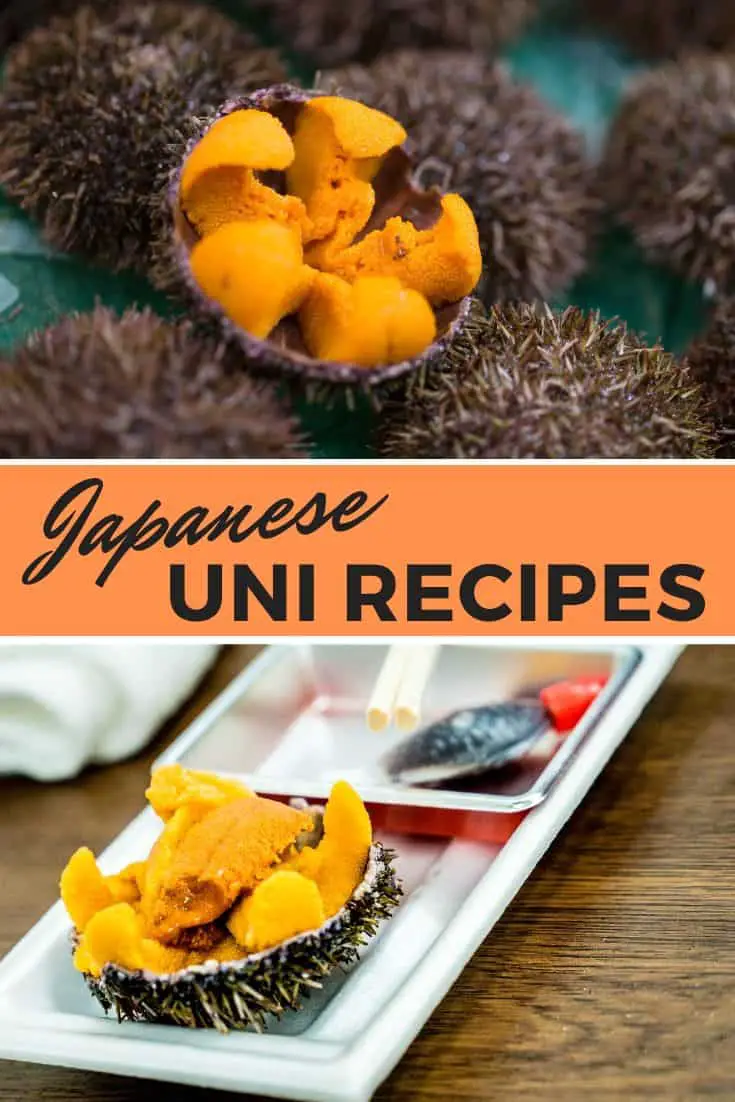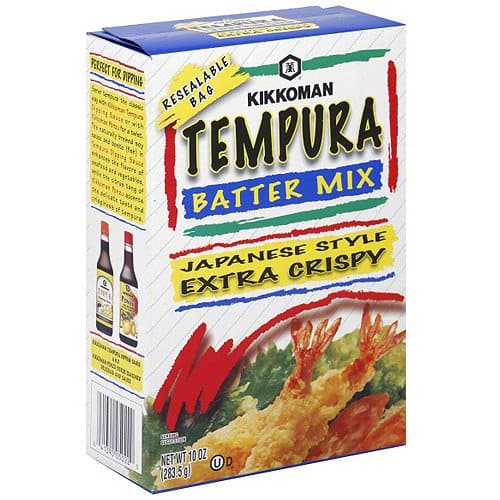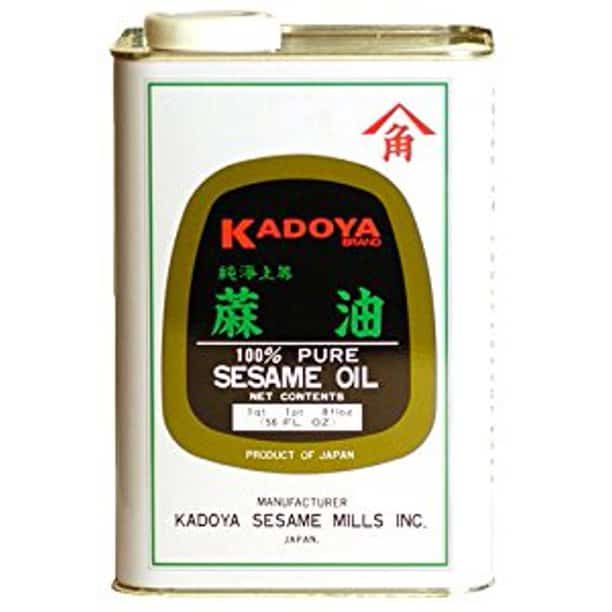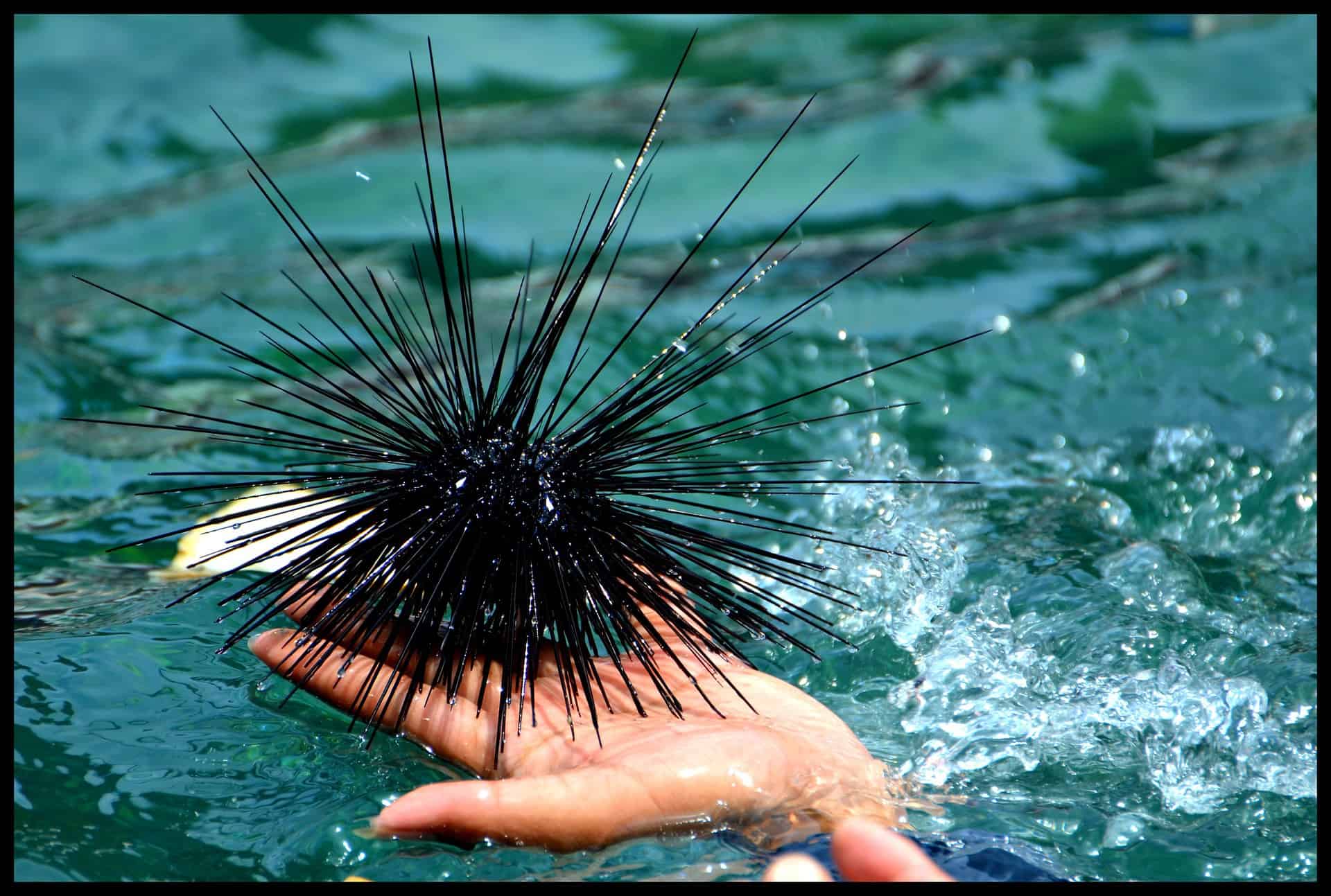Japanese uni recipes: What is uni? + how to prepare it
If you go to a Japanese restaurant, you might notice a dish called “uni”. No, it’s not short for “university”; in fact, you pronounce it “oo-nee” instead of “you-nee”.
In Japan, the word “uni” refers to the gonads of sea urchins that people cook and eat. It’s one of the most unique cuisines in Japan that you must try!
Originally, uni was used in sushi. But due to its high popularity, you now can find many kinds of dishes with uni as the main ingredients.
In this blog post, we’ll explore some of the most popular uni recipes that you can make at home.


Check out our new cookbook
Bitemybun's family recipes with complete meal planner and recipe guide.
Try it out for free with Kindle Unlimited:
Read for freeIn this post we'll cover:
Traditional Japanese uni recipes
In Japan, most uni is served in the form of sushi. That makes sense because sushi is inarguably the most popular way to eat fresh seafood in this country.
Of course, there are many ways to serve uni in sushi or sashimi.
How is uni served?
It’s most often served as nigiri sushi. This means it’s placed on a ball of sticky rice and seasoned with soy sauce.
Uni is also a popular topping for gunkan maki sushi. This type of sushi roll is called the “battleship” because it’s shaped like a vessel and has room for fillings.
The uni is on top of the rice, which is wrapped in nori seaweed.
In Japan, you can also find uni sashimi or raw uni. It’s meant to be eaten alive from popular street vendor stalls.
I know what your next question is…
Can uni be eaten raw?
Yes, sea urchins can be eaten raw, just like oysters or sashimi. If the uni is fresh, it’s perfectly safe to eat. The taste is briny and lightly sweet, so it’s not something that’ll put you off.
Note that the only edible parts of the sea urchins are the gonads. The urchin is cut up and the gonads are taken out and served raw.
How do I know the sea urchin is fresh?
High-quality seafood is more expensive than your regular fish varieties.
There are only 18 types of edible sea urchins and catching them is no easy task for fishermen. That’s the reason for the high price of uni.
If you want to determine if the sea urchin is fresh, consider the color, taste, and texture. The best quality uni has a vibrant color and feels firm to the touch.
It should NOT smell fishy. It must have a slight ocean water scent but if there’s any fishy or overpowering scent, it’s likely rotten.
Here are the recipes for the 2 most popular uni dishes in Japan!

Japanese uni tempura recipe
Ingredients
- Fresh uni
- Nori sheets
- Oba (Japanese basil)
- Tempura batter
- Sesame oil
- Vegetable oil for frying
Instructions
- Prepare a nori sheet.
- Arrange oba on top of it.
- Top it off again with uni.
- Roll the nori so the oba and uni are all covered. You can roll it in a cigar-like shape or have it more like a ball. Or you can make both and dress up your table setting very nicely.
- Dip the roll in the tempura batter and make sure every piece is covered in the batter.
- Deep fry the tempura until it turns golden.
- Take it out of the oil and let it soak for 5 minutes.
- Serve as a side dish or snack.
While you probably don’t have all of the ingredients yet, getting fresh uni might be the biggest challenge. Make sure to look for fresh live sea urchins for the tastiest dish. Here are the other ingredients you might need:


Uni nigiri sushi
Ingredients:
- Fresh uni
- Seasoned sushi rice
- Japanese soy sauce
- Spring onion
- Wasabi
Instructions:
- Sprinkle the uni with lemon juice and set aside. Take a small ball of seasoned rice and roll it into an oval shape.
- Arrange the beds of rice on the serving table.
- Carefully place one tongue of uni on top of each rice ball. Garnish with spring onion.
- Serve it with soy sauce and wasabi.
Modern uni recipes
The modern culinary world has brought the sea urchin flavor to the next level. You can now use uni as a bread spread, in a pasta dish, or any other way. Here are 5 ideas to eat uni in modern ways.
These recipes are inspired by recipes from around the world:
- Italian risotto with uni
- Uni toast or bruschetta
- Uni spaghetti
- Ika uni
- Uni ceviche
Italian risotto with uni
This is a creamy, risotto dish that takes comfort food to another level.
Ingredients:
- 4 oz of uni
- 2.5 tbsp of heavy cream
- 2.5 tbsp of butter
- 1.5 tbsp of olive oil
- 2 shallots
- 2 cloves of garlic
- 1 cup of risotto rice
- 2/3 cup of white wine, preferable dry
- 5 cups of fish stock (or use one of these substitutes)
- 2 oz freshly grated parmesan
- Some salt and pepper for seasoning
Instructions:
- In a food processor, blend the uni, cream, and butter until it’s smooth.
- Place your skillet on medium-high heat and saute the shallots for approximately 2 minutes.
- Add garlic and the rice, and saute for another 3 minutes.
- Now deglaze your pan using wine. Wait until the wine starts to evaporate. Next, add 3 cups of the stock and stir it often.
- As the liquid evaporates, keep adding more stock until you use it all up. Boil for at least 2o minutes until the rice is cooked.
- Now it’s time to add the uni mixture and the rest of the butter.
- Add the cheese, salt, and pepper.
Uni toast or bruschetta
Think of uni toast as a type of uni bruschetta: crispy and flavorful.
Ingredients:
- 10 lobes of uni
- 2 ribs of celery, finely chopped
- 1 stick of plain butter
- Coarse salt
- Chili oil
- 1/2 tsp of lemon juice
- Olive oil
- Sliced baguette
Instructions:
- Blend the uni in a food processor until it gets soft.
- Gradually put in the butter and lemon juice with the machine still running.
- Add in sea salt to taste.
- Set aside until it gets firm.
- Toast the baguette slices with olive oil.
- Spread the uni butter on the bread.
- Sprinkle it with chopped celery and a few drops of chili oil.
Creamy sea urchin spaghetti
Ingredients:
- 6 lobes of uni
- 80 g of creme fraiche
- 300 g of dried spaghetti
- Olive oil
- 2 cloves of garlic, finely minced
- 1 tbsp of chili flakes
- 1 piece of shallot, finely minced
- 125 ml Japanese sake or white wine
- Ground black pepper to season
Instructions:
- Take 2 lobes of uni and blend them with creme fraiche. Set aside.
- Cook the pasta in salted water and start cooking the sauce while waiting for the pasta to turn al dente.
- Heat olive oil over a stove on medium heat.
- Saute the garlic and shallot until they get aromatic. Add in the chili flakes.
- Pour in the wine or sake. Let it simmer for about 1 minute until it’s reduced.
- Turn off the heat and wait until the pasta is al dente.
- When the pasta is done, quickly transfer it to the garlic sauce bowl.
- Pour in the uni cream and mix well. If required, spoon in some pasta water to make it easier to mix.
- Place the pasta on a plate.
Ika uni
This isn’t really a recipe, but an easy way to eat raw uni. Ika uni refers to a mixture of raw sea urchin and squid.
In a bowl, add the following ingredients and mix them together:
- 150 g of sashimi squid
- 3 or 4 tbsp of raw sea urchin
- 1 tsp of mirin sauce (it’s a type of sauce similar to sake)
- 1.5 tsp of high-quality soy sauce
- 1 tsp of sake
Uni appetizer ceviche
Ceviche is a popular South American seafood dish. It’s made with marinated raw fish or seafood and is served as an appetizer. The seafood is cured with citrus juice and spiced with chili flakes. Here’s the recipe for uni ceviche.
Ingredients:
- 1 uni
- 2 tomatoes
- 1/2 an onion
- 1/4 of a Mexican yam, known as jicama or other yam variety
- 1 chili pepper
- 2 oz of sea beans
- 4 leaves of shiso or basil
- 1/3 cup lime juice
- 1 tbsp extra virgin olive oil
- Salt and pepper to taste
Instructions:
- Cut the tomatoes into medium-sized chunks. Remove the seeds if you don’t want loose seeds in your ceviche.
- Mix with onion, shiso leaves, yam, chile, and sea beans.
- Refrigerate for an hour to make sure it’s completely chilled.
- When serving, mix the lime juice, olive oil, salt, and pepper, and pour the liquid onto your seafood.
Uni sea urchin as food
The concept of using sea urchins as food isn’t exclusive to Japan. For many centuries, sea urchin has been cooked in many countries all over East Asia, Alaska, and Mediterrania.
However, the Japanese have their way of cooking this marine creature.
Most people think it’s kind of weird to eat sea urchins because the animal has a spiky, hard, and pitch-black exterior. Little do they know that inside that exoskeleton, there lies some bright-colored meat with a tender texture and rich flavor.
The only edible part of sea urchin is the gonad, which contains roe. The shape looks like a tongue in apricot color.
This gonad has a creamy and soft texture that’s similar to salmon roe. Each sea urchin usually contains 5 lobes of the gonad.
Also read: these are some great teppanyaki seafood recipes you could try
What does uni taste like?
Sea urchins can taste different, depending on the gender, subspecies, location, and cooking method. However, the best taste of uni heavily relies on its freshness.
A uni dish is significantly more expensive if it’s served as soon as it’s taken out of the sea. The overall taste is lightly sweet and similar to other seafood.
But, contrary to popular belief, it doesn’t taste fishy. Experts describe the taste as “oceany and briny”.
In general, uni has a strong oceanic flavor and aroma. The taste is savory, slightly salty, and rich. The dish has a buttery consistency that melts in your mouth.
If you’re a seafood aficionado, especially if you love eating fish roe, then you’ll most likely love the taste of uni!
However, uni that’s no longer fresh would bring out a different flavor. It tastes dank and fishy.
There’s an unpleasant aftertaste that stays in your mouth for a while. You’ll feel like something’s coating your throat.
How to prepare uni for eating
As discussed before, the taste of uni depends on how fresh it is. That’s why most sea urchins are sold alive and kept alive until it’s time to cook them.
If you buy sea urchins to cook yourself, always opt for the live ones.

You’ll notice how the spikes can still gently move about while the spikes are still stiff and rigid.
Split the black exoskeleton using pointed scissors. If the sea urchin is large, you can start it by drilling a hole on the underside using the scissor’s tip.
Wear a glove while doing it to protect you from the sharp spikes.
Inside the round shell, you’ll see 5 pieces of orange tongues in a symmetrical position. Those are the uni.
Scoop them out carefully using a spoon and rinse them gently with cold water. You can now cook the uni or eat it raw.
What goes well with uni?
Uni has a very distinct flavor and it can be eaten in many combinations.
It’s well paired with sushi and other seafood. But it tastes great when combined with pasta, such as linguine, spaghetti, and ravioli.
If you want something more special, try uni with baked shrimp or served inside tacos. That’s a whole new way to enjoy fish tacos!
How long is uni good for?
Most uni is good for approximately 10 days in the fridge. You can freeze it for up to 60 days. You must serve fresh uni within 2 days or it goes bad.
The shelf life of live sea urchin is about 5 days. So prepare to eat this food up fast.
Why is sea urchin so expensive?
Consider sea urchin as a type of delicacy. It’s very difficult to catch these critters in the sea.
It’s not like fishing, where they use industrial methods. The only way to catch them in the wild waters is by diving.
Most of it is harvested by hand divers. In some cases, they use daggers.
So it’s no surprise that uni is expensive since it’s hard to harvest.
Enjoy this delicacy
Japan is a haven for unique culinary dishes. So if you wish to experience a new taste on your tongue, Japanese uni can be the perfect idea for you!
Japanese people love it and even tourists are highly curious about it. You may end up loving it or even completely disliking it, but who knows?
So why don’t you go and have a bite?
Also read: best sushi knives for cutting fish and more
Check out our new cookbook
Bitemybun's family recipes with complete meal planner and recipe guide.
Try it out for free with Kindle Unlimited:
Read for freeJoost Nusselder, the founder of Bite My Bun is a content marketer, dad and loves trying out new food with Japanese food at the heart of his passion, and together with his team he's been creating in-depth blog articles since 2016 to help loyal readers with recipes and cooking tips.
